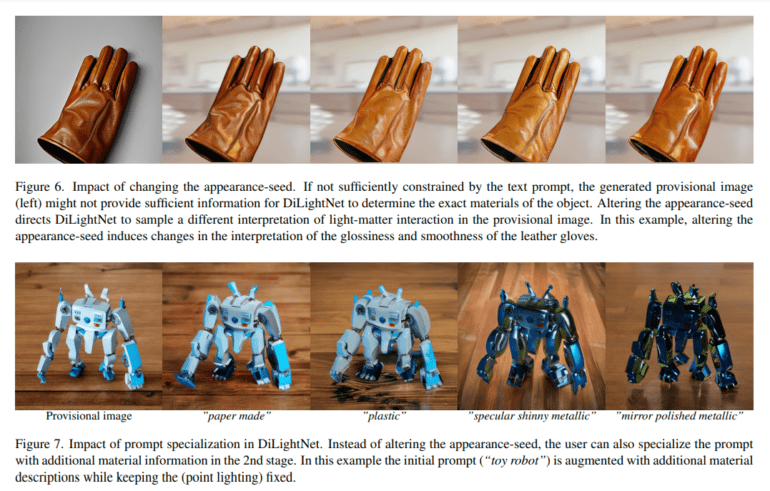- LuminaTech, an innovative AI technique, addresses precise lighting management in text-triggered image synthesis.
- Collaboration between experts from Microsoft Research Asia, Zhejiang University, College of William & Mary, and Tsinghua University led to LuminaTech’s development.
- Current models lack finesse in independently controlling lighting, resulting in correlated image content and lighting conditions.
- LuminaTech employs a three-step protocol involving initial image generation, refined diffusion model application, and background inpainting for precise lighting alignment.
- Radiance cues and scene geometry visualizations guide LuminaTech’s diffusion process.
- Rigorous training on diverse synthetic datasets validates LuminaTech’s effectiveness across various shapes, compositions, and lighting scenarios.
- LuminaTech marks a significant advancement in text-triggered image synthesis, offering enhanced lighting management capabilities.
Main AI News:
In a recent collaboration, experts from Microsoft Research Asia, Zhejiang University, College of William & Mary, and Tsinghua University have unveiled an innovative technique, LuminaTech, aimed at tackling the intricate challenge of precise lighting management in text-triggered diffusion-driven image synthesis. While current models adeptly translate text prompts into images, they often lack the finesse required to independently control lighting, resulting in correlated image content and lighting conditions.
Contemporary text-triggered generative frameworks excel in rendering intricate images based on simple text inputs, yet wrestle with autonomously managing lighting apart from image content. The groundbreaking LuminaTech method introduces a meticulously crafted three-step protocol to combat this issue. Initially, an initial image is generated amidst unregulated lighting conditions. Subsequently, LuminaTech, a sophisticated diffusion model, comes into play to reimagine the foreground subject with exacting lighting control through radiance cues. Finally, the background undergoes inpainting to align with the desired lighting scheme, yielding images harmonious with both the textual prompt and designated lighting parameters.
LuminaTech harnesses radiance cues and scene geometry visualizations under the target lighting to steer the diffusion process. These cues stem from a rough estimation of the foreground subject’s contours derived from the initial image. The model undergoes rigorous training on a diverse synthetic dataset comprising objects of varying shapes, compositions, and lighting scenarios. A series of comprehensive experiments underscore the efficacy of the proposed technique in maintaining consistent lighting control across diverse text inputs and lighting environments.
The study unveils a pioneering methodology to tackle the intricate realm of precise lighting management in text-triggered image synthesis. Through a myriad of experiments, the efficacy of the technique in generating lifelike images congruent with both textual cues and prescribed lighting conditions is demonstrated. In essence, the proposed methodology marks a significant stride forward in text-triggered image synthesis, offering augmented lighting management capabilities.
Conclusion:
LuminaTech’s breakthrough in fine-grained lighting control for text-driven image synthesis represents a pivotal advancement in the market. Its ability to independently manage lighting conditions offers immense potential for industries reliant on high-quality image generation, such as advertising, entertainment, and e-commerce. With LuminaTech, businesses can expect more sophisticated and visually appealing content, enhancing customer engagement and driving a competitive edge in the market.

